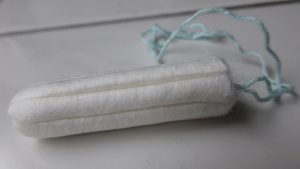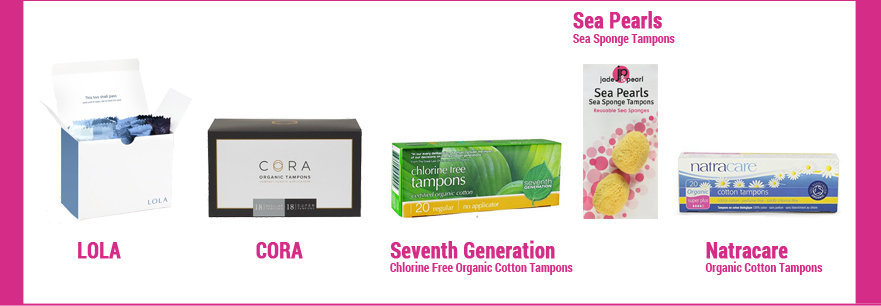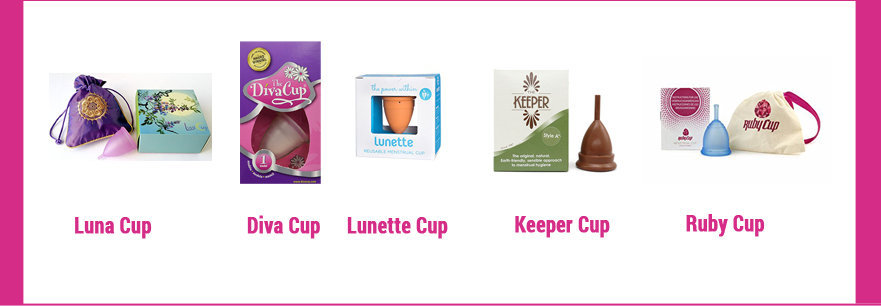 Tampons are a very convenient way to manage your period.
Tampons are a very convenient way to manage your period.
They are less mess and less stress, easy to transport and cheap to buy.
However, tampons are also one of the more dangerous ways to deal with menstrual blood.
Your vagina is one of the most absorbent parts of your body, and you should be very sure of the potential damage your tampon could cause you before using it.
What’s really in your tampons?
Tampons are made mostly of cotton and rayon.
Both are absorbent, and both have their downsides.
Cotton is an in-demand crop, and very susceptible to pest damage.
Quite often this means that cotton crops are heavily sprayed with pesticides, which also get absorbed into the cotton itself.
This leaves a residue in the cotton that you then insert into your body.
To get that nice pure white color of a traditional tampon the cotton is heavily processed, bleached, and dyed.
Sometimes artificial fragrances are added to enhance ‘freshness’ or ‘confidence’ – marketing terms that big companies have used for years to tell you that what happens to your body during menstruation is something that is bad or wrong.
One of the main pesticides used on cotton contains Glyphosate, a chemical that is known to have an impact on cytochrome P450.
Your body makes this enzyme to help it combat toxins in the environment.
Research indicates that when this enzyme is damaged it can cause irreparable damage to your digestive and reproductive systems.
Rayon is made from plant pulp that is processed, bleached or dyed, and turned into fabric.
Dioxins are a by-product of that process and are incredibly harmful.
World Health Organization has labeled them ‘extremely toxic’ to humans and ‘a known carcinogen’.
They have also been linked to reduced fertility, a damaged immune system, and endometriosis.
Dioxins do not break down over time, either in the environment or in your body.
They accumulate and build up. In our bodies, they specifically build up in our fat cells and then released into our brains and bloodstream when they are burned for energy.
Even a 100% cotton tampon that isn’t made with 100% organic fibers is going to be putting dioxin, pesticide and bleach residue into your vagina.
Often, tampon manufacturers will wrap the ‘absorbent core’ in a fabric batting.
This fabric is made from polyethylene and polystyrene, two extremely common plastics.
Polystyrene is what you’d find in clamshell packaging, and polyethylene is found in soda bottles.
Neither is particularly absorbent or useful, but the makers of tampons have decided that this is another ingredient you should be putting inside your body.
Using tampons to manage your period may be convenient, but it also may be causing damage to your body that can’t easily be healed.
Toxic Shock Syndrome
You have probably heard of Toxic Shock Syndrome (TSS) before.
There are warning labels about it on every package of tampons.
Every health class that teaches pre-teen girls will also warn you about it.
TSS was first discovered in the 1970s when a lot of women were getting very sick.
It was discovered that their tampons (usually the new super absorbent style) were causing an infection from two different kinds of bacteria.
Staphylococcus aureus and Streptococcus pyogenes invade the body and release toxins into the body.
The body responds with a rapid decrease in blood pressure, which deprives the organs of oxygen.
TSS is life-threatening and many women today still get it.
Using tampons, especially those that are super or ultra absorbent can make the perfectly balanced ecosystem of your vagina go haywire.
They can dry out the tissues, causing micro tears and abrasions that allow these bacteria to enter the body rapidly.
Toxic Shock Syndrome is becoming more prevalent again, and it is thought to be because of a decline in awareness and understanding of what causes it.
How you can minimize your health risk
Use something else! See below for alternatives
– Be extremely careful when inserting tampons to avoid scratching or damaging your delicate vaginal walls
– Alternate using tampons with other period management choices
– Never use super-absorbent tampons, use ones for lighter flow and change frequently
– Don’t ever use a tampon overnight, no matter how convenient
– Don’t use tampons between periods
Safer alternatives
If you truly feel that tampons are the only way you can manage your menstruation then you need to do some research into the best all-natural, chemical free organic tampons on the market.
Like with the food you buy, read the label for ingredients and safety warnings.
These brands will be better for you, but will still carry some risk, as TSS has been found in women who only use organic products as well.
 – LOLA
– LOLA
– CORA
– Seventh Generation Chlorine Free Organic Cotton Tampons
– Sea Sponge Tampons
– Organyc 100% Organic Cotton Tampons
– TOM Organic
A better solution is to use absorbent pads, but again you need to do your research.
Mainstream maxi pads contain a lot of the same dangerous materials that tampons do, and usually some even more harmful extras like artificial colors and fragrances. Here are some great brands of organic and non-toxic disposable pads:
– Natracare
– Glad Rags Organic Pads
Reusable cloth pads are also gaining popularity.
Much like cloth diapers they use natural materials to absorb and are washed the same way.
It may take some getting used to but it is far safer for you and much better for the environment as well.
Menstrual Cups are another up and coming star in the feminine care arena.
These small cups are usually made of silicone or other non-plastic materials that are inserted much like a tampon is, and washed and reused during your cycle.
 They are as easy to transport as a tampon is and don’t damage your delicate anatomy like a tampon would. These brands are well-reviewed and tested:
They are as easy to transport as a tampon is and don’t damage your delicate anatomy like a tampon would. These brands are well-reviewed and tested:
– Diva Cup
– Luna Cup
– Lunette Cup
– Keeper Cup (this one is made with latex)
– Ruby Cup
If you take a look at the math, women menstruate for 7 out of every 28 days, for approximately 40 years of their lives.
That’s over 3000 days of having a period in your lifetime.
Think about having something in your body for 10 years that has been linked to infertility, autoimmune diseases, and cancer.
Is that a risk you want to take? Using tampons to manage your period is taking a chance with your life.
For the sake of your health, pick a different solution.
To protect yourself from these toxic chemicals (which lead to higher risk of cancer) in many of our everyday’s products, go to the next page and discover how to boost your immune system –
About the Author:
Emma Deangela is the best selling author of The Alkaline Diet Program and 80/20 Fat Loss. She has helped over tens of thousands of men and women to lose weight and transform their health with sound nutrition advice. Learn how you can lose weight fast – How to lose weight by adding these alkaline foods.
What brands of tampon are you using?
Please share with your friends this article on Tampons – Use any of the social media and email buttons on the left of our website.


Leave a Reply